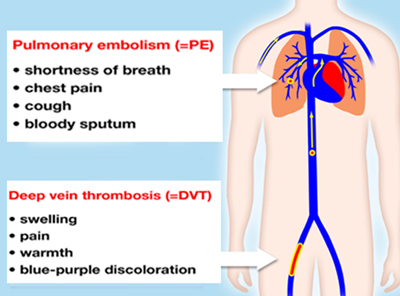Less Mobile Elders at Higher Risk of Blood Clots
Less mobile Elders are at higher risk of blood clots which cause heart attacks and strokes. So at Daughterly Care, we want all our private in-home Nurses, In Home Care Caregivers and Live in Carers and clients to be aware of the signs and risks of blood clots or Deep Vein Thrombosis (DVT). Our Private Registered Nurse, Charmayne has compiled valuable information on blood clots so you can take action to prevent or treat blood clots quickly.
Deep Vein Thrombosis (DVT) – Signs, Symptoms and Prevention
A Deep Vein Thrombosis (DVT) is a blood clot that forms in the deep veins. It usually develops in the leg, most commonly in the calf or thigh, however, it may also form in the deep veins of the arms, pelvis or abdomen. When the blood flow slows or is blocked, a clot may form on the wall of a vein.
Elders at risk:
- DVT is a common complication of surgery and immobility. It can occur at any age but people most at risk are adults over age 60.
- Being overweight or obese is associated with reduced mobility and is a known risk factor for heart attacks and strokes.
- When walking, calf muscles contract and blood is pumped from the veins towards the heart. Reduced mobility causes the blood flow to become sluggish and increases the likelihood of blood clots forming. Lack of movement may occur after illness, surgery, or travelling and sitting for long periods.
- Other risk factors include a previous history of DVT, inherited clotting disorders, taking oral contraceptives, hormone replacement therapy, pregnancy and smoking. All these increase the risk of blood clots occurring.
 |
One of Daughterly Care’s professional In Home Care Caregivers, Kelly, noticed our elderly client had a red hot, sore leg and suggested Mrs R see a doctor about the pain in her leg. The doctor felt it was nothing to be concerned about. On Kelly’s next visit to the client, she strongly recommended the client see the doctor again and the pain in Mrs R’s leg was confirmed as a blood clot. Blood clots do kill people as they cause heart attacks and strokes. Congratulations to Kelly for her keen powers of observation.
Mrs R. sent her appreciation to us: “I wanted to thank Kelly again for being so professional. She insisted I visit the doctor twice to make sure it wasn’t a blood clot. I am thankful, I listened. An ultrasound and X-ray confirmed it was indeed a blood clot, which I’m now getting treated.” |

Signs and Symptoms
It is important to recognise that only about half of the people who have DVT, show signs and symptoms.
The signs and symptoms in the leg affected by a DVT include:
- Swelling of the leg or along a vein in the leg;
- Pain or tenderness in the leg, which may only be felt when standing or walking;
- Increased warmth in the area of the leg that’s swollen or painful;
- Red or discoloured skin on the leg.
The first indication of a DVT may be the signs and symptoms of a Pulmonary Embolism (PE). This is where a blood clot breaks loose and travels to the lungs, restricting blood flow and decreasing oxygen levels in the blood. It can be life threatening when the blood clot travels to your heart, therefore causing a heart attack or travels to your brain, causing a stroke.
Common signs and symptoms include:
✔ Unexplained shortness of breath – appears suddenly and always gets worse with exertion.
✔ Chest pain – the pain may become worse when you breathe deeply, cough, eat, bend or stoop. The pain will get worse with exertion and will not go away when you rest.
✔ Coughing – which may produce blood streaked sputum.
✔ Rapid breathing and a fast heart rate also may be signs of PE.


Prevention
Prevention is an important strategy for all Elders. To reduce the risk of DVT:
✔ Exercise regularly and maintain a healthy body weight.
✔ Keep hydrated and move – avoid sitting for long periods and when sitting perform heel/toe lifts.
✔ Do not smoke.
TIPS when caring for our Elders:
✔ Position them to promote blood flow from the lower extremities.
✔ Keep the feet elevated and knees slightly bent.
✔ Avoid placing pillows under the knees and causing positions where knees and hips are sharply bent.
✔ Encourage regular mobilisation throughout the day.
✔ Use a recliner or footstool when sitting.
✔ Teach movements you can do while seated and remind Elders to do them frequently.

If you suspect a DVT or PE, you should visit your doctor or hospital immediately.
- What Are the Signs and Symptoms of Deep Vein Thrombosis? by National Institutes of Health.
- Deep vein thrombosis by Mediline Plus.
- Deep Venous Thrombosis (DVT) by Melbourne Haematology.
- Deep Vein Thrombosis by Australasian College of Phlebology Inc.
- To download simple movement and stretches that reduces the risk of DVT, click here.
- To download Awareness in Motion & Movement Guide, click here.
One of the benefits of choosing Daughterly Care Nurses and Caregivers is that they are trained in the LiFe Exercise Program, which evidence based research from the University of Sydney shows reduces falls in Elders by 31%.
Thank you to Daughterly Care’s Registered Nurse, Charmayne for writing this article.

Read unsolicited feedback from our clients. We’re always thrilled to receive such kind words.
The next step is easy … contact us for a confidential chat about your needs or to organise your, free no obligation consultation email claireg@daughterlycare.com.au or call us on (02) 9970 7333.
